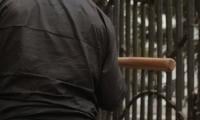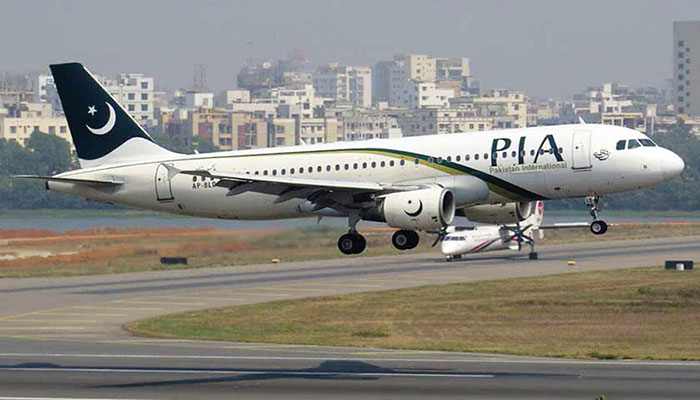Hawalian plane crash report: AAIB fixes clear responsibility in Hawalain plane crash, says SHC told
KARACHI: The Aircraft Accident Investigation Board has fixed clear responsibility in its inquiry report with regard to the Pakistan International Airlines ATR crash incident at Hawalian in December 2016, besides certain recommendations have been given to ensure safety measures, ACIB president told the Sindh High Court on Thursday.
The AAIB president, along with section officer of Civil Aviation department, submitted the final inquiry report of the crash before the SHC, which was hearing a petition seeking a judicial inquiry into the December 2016 flight PK-661 crash in which 42 passengers, including singer-turned-preacher Junaid Jamshed and the crew, lost their lives.
AAIB President Air Commodore Usman Ghani submitted that the executive summary of final investigation report along with a brief note to the court has been filed. He submitted that the complete report has been available to the CAA website. He said that as far as safety of public at large is concerned, the AAIB has fixed clear responsibility in its inquiry report and certain recommendations have been given in the summary to ensure safety measures to avoid crashes in future.
The SHC division bench, headed by Justice Mohammad Ali Mazhar, after taking the inquiry report in record, directed director airworthiness of CAA and director safety management and maintenance PIA to appear in person before the court on December 1.
According to the AAIB report, the ATR’s failure sequence was triggered because of a fracture of turbine blade consequent to one procedure anomaly of PIA maintenance. The report stated that dislodging/fracture of one power turbine PT-1 blade of engine triggers a chain of events. The unusual combination of fractured/dislodged PT-I blade with two latent factors caused off design performance of the aircraft and resulted into the accident, the report opined.
The report stated that dislodging/fracture of PT-1 blade of engine occurred after omission from the engineer maintenance manual by the PIA Engineering during an unscheduled maintenance performed on the engine in November 2016 in which the PT-1 blades had fulfilled the criteria for replacement but were not replaced. The board said that the fracture of PT-1 blade in engine occurred after accumulating flying time slightly more than the soft life of 10,000 hours due to known quality issue and this aspect has already been addressed by re-designing of PT-1 blades by Pratt and Whitney, Canada.
The board said that during the course of investigation, various findings were established progressively and in order to ensure safety, the AAIB issued two immediate safety recommendations to the PIA Engineering and CAA Airworthiness with regard to the entire ATR fleet.
Referring to the ATR crash, the petitioner, Syed Iqbal Kazmi, told the court that the DG CAA had made startling disclosures about the functioning of ATR planes in his letters to his seniors. He said that 20 incidents were recorded where the engines of ATR planes had stopped during flights. Besides, in 90 cases, the engines of ATR planes were removed as well. He said that despite knowledge of defects in the aircraft, the respondents did not take precautionary measures to avoid accidents and save previous lives.
He argued that after such incidents, it was the constitutional obligation of the Cabinet Division secretary, DG CAA and PIA chairman to refrain from purchasing outdated planes, using them and risking the lives of passengers and crew members.
-
 World's Biggest Fish Market Is Set To Open In Sydney: First Look Revealed
World's Biggest Fish Market Is Set To Open In Sydney: First Look Revealed -
 Ariana Grande, Jonathan Bailey Reuniting For THIS Project
Ariana Grande, Jonathan Bailey Reuniting For THIS Project -
 Sydney Sweeney Saved Herself From Brutal Roast: Here's How
Sydney Sweeney Saved Herself From Brutal Roast: Here's How -
 Prince Harry’s ‘unrealistic’ Hopes Get Dashed: ‘Sincerity For King Charles Is Under Question’
Prince Harry’s ‘unrealistic’ Hopes Get Dashed: ‘Sincerity For King Charles Is Under Question’ -
 Meghan Markle's New Product Sells Out Within Minutes
Meghan Markle's New Product Sells Out Within Minutes -
 Revealed: Who Leonardo DiCaprio Was Talking To In Viral Golden Globe Video
Revealed: Who Leonardo DiCaprio Was Talking To In Viral Golden Globe Video -
 Prince William Represents King Charles At Windsor Castle Ceremony
Prince William Represents King Charles At Windsor Castle Ceremony -
 'Hotel Transylvania 5' Gets Major Update By Film's Star
'Hotel Transylvania 5' Gets Major Update By Film's Star -
 PlayStation Plus Adds Over 300 Hours Of Gameplay Across Massive New Titles
PlayStation Plus Adds Over 300 Hours Of Gameplay Across Massive New Titles -
 Mandy Moore On Mom Friendships Amid Ashley Tisdale's Mom Group Claims
Mandy Moore On Mom Friendships Amid Ashley Tisdale's Mom Group Claims -
 Justin Baldoni Objects To Removing Taylor Swift's Name From Case
Justin Baldoni Objects To Removing Taylor Swift's Name From Case -
 Princess Eugenie, Beatrice Warned About Royal Titles After They Turn Down Prince William's Request
Princess Eugenie, Beatrice Warned About Royal Titles After They Turn Down Prince William's Request -
 Samsung One UI 8.5 Adds Fully Customisable Unlock Animations
Samsung One UI 8.5 Adds Fully Customisable Unlock Animations -
 Injured By Bullets, New York Father-son Duo Beat Alleged Gunman With A Bat
Injured By Bullets, New York Father-son Duo Beat Alleged Gunman With A Bat -
 Annular Solar Eclipse 2026: Here's Everything To Know About The ‘ring Of Fire’
Annular Solar Eclipse 2026: Here's Everything To Know About The ‘ring Of Fire’ -
 Blake Lively Gives Up Hopes Of Taylor Swift Reconciliation?
Blake Lively Gives Up Hopes Of Taylor Swift Reconciliation?




